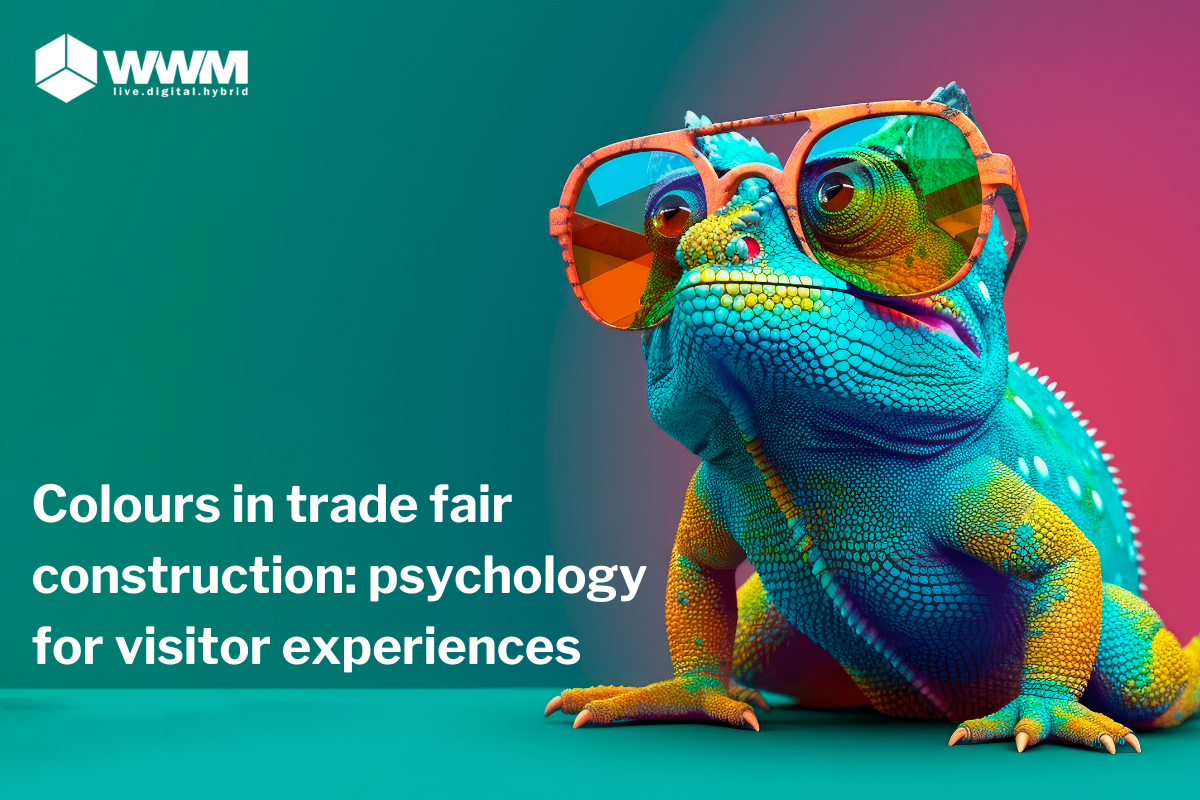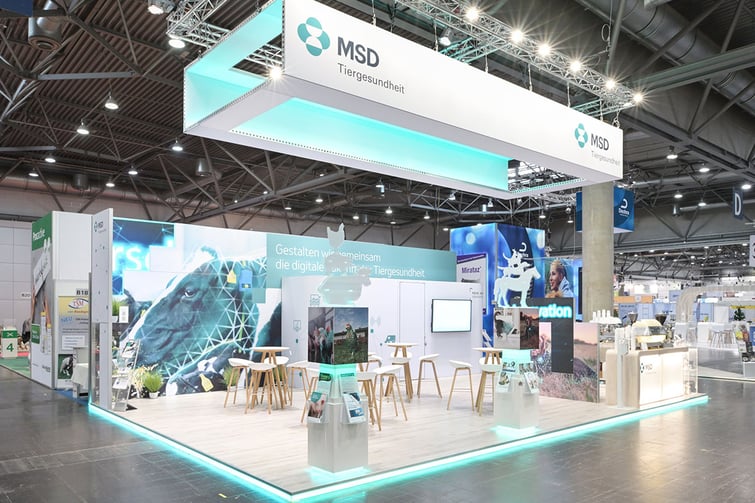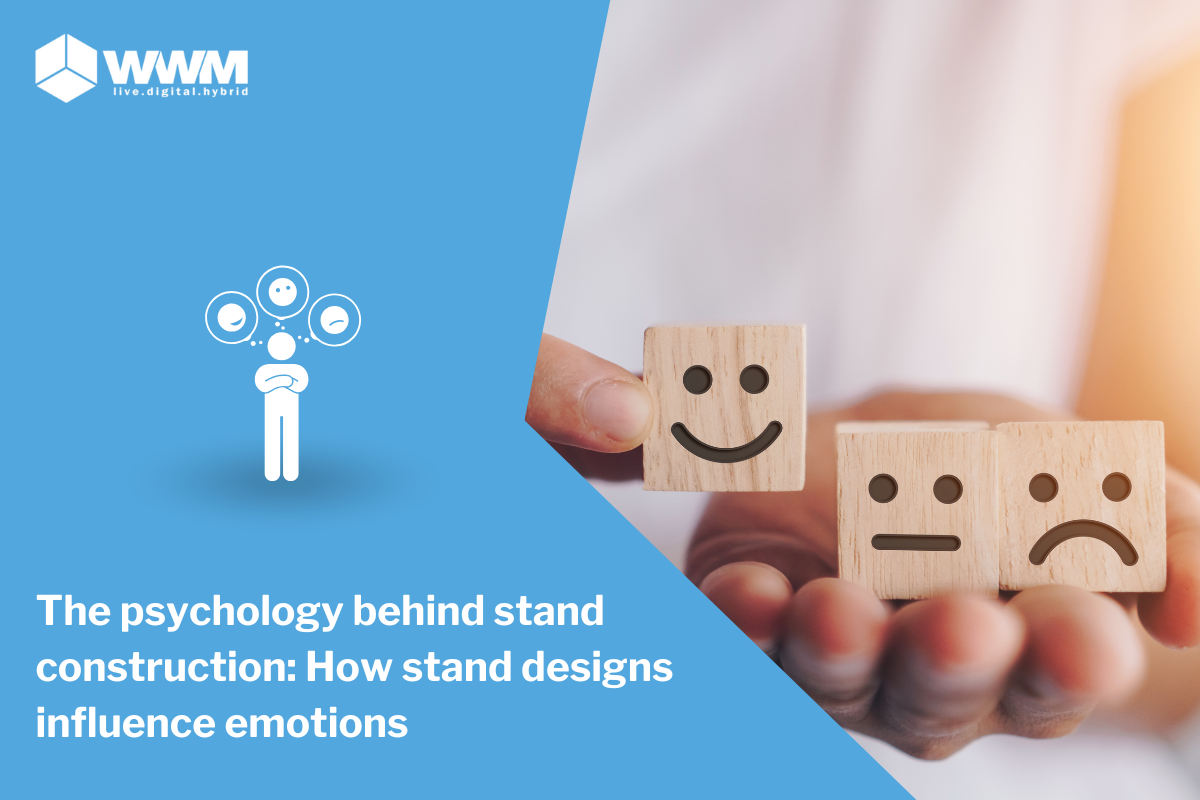The psychology behind stand construction: influence emotions
Trade fairs are vibrant melting pots of commerce and innovation, where companies and customers meet in a dynamic environment. But what is often...
2 min read
 René Meures
:
Wednesday, 21. February 2024
René Meures
:
Wednesday, 21. February 2024

Trade fairs are not just events at which companies present their products and services. They are also a space where psychology plays a decisive role. The design and layout of an exhibition stand can have a significant impact on the visitor experience and impress potential customers and visitors on an emotional level. In this blog article, we will highlight the psychology of colour and provide examples of how design and layout can influence the visitor experience.
.png?width=940&height=627&name=Titelbild%20(10).png)
Exhibition stand construction is not just about designing an attractive stand, but also about appealing to visitors on an emotional level and creating a positive perception of the brand. Psychological principles play a crucial role here, as they can help to understand and influence the behaviour and reactions of visitors.
Colour psychology is an important aspect of exhibition stand design, as colours can have a strong emotional impact. For example, warm colours such as red and orange are associated with energy and excitement, while cool colours such as blue and green have a calming and relaxing effect. Through the clever selection of colours, an exhibition stand can create a certain mood and arouse the interest of visitors. Naturally, the main orientation of the colour scheme is based on the exhibitor's corporate design. Accent colours can support this.
Example:
Our exhibition stand for a veterinary pharmaceutical company uses a turquoise colour scheme (taken from the corporate colours) to create a relaxed atmosphere and a sense of well-being.

The design of the space also plays an important role in exhibition stand construction. An open and inviting layout can encourage visitors to enter the stand and take a closer look at the products or services on offer. By skilfully placing products, displays and seating, an exhibition stand can create a positive and inviting atmosphere.
Example:
An exhibition stand for electronic products uses open shelving and well-lit displays to give visitors the feeling that they can freely explore the space while discovering the latest products.
The neuropsychology of attention is concerned with how people process information and which stimuli attract their attention. A well-designed exhibition stand should therefore aim to capture and hold the attention of visitors. This can be achieved through the use of visual stimuli such as eye-catching graphics, movement or unusual shapes.
Example:
Our exhibition stand for a pharmaceutical company uses interactive games and demonstration areas to capture visitors' attention and invite them to linger while they can find out about the various products and services at the same time. Scene tip: Retrogames that make direct reference to a product or service are currently very popular.
Psychology plays a crucial role in exhibition stand design and can help to influence the visitor experience in a positive way. By skilfully applying principles such as colour psychology, interior design and the neuropsychology of attention, companies can create an impressive exhibition stand that arouses the interest of visitors, attracts their attention and promotes a positive perception of their brand. However, this is always based on and in line with the company colours and corporate design.

Trade fairs are vibrant melting pots of commerce and innovation, where companies and customers meet in a dynamic environment. But what is often...

Trade fairs are far more than just platforms where products are exhibited and services advertised. They are the stage for a journey that appeals to...

The art of exhibition stand construction in a diverse business world Exhibition stand design has evolved into an art form that is constantly evolving...